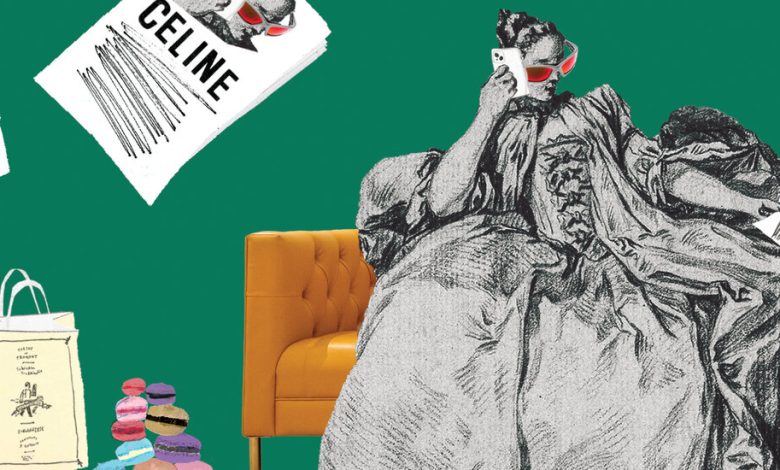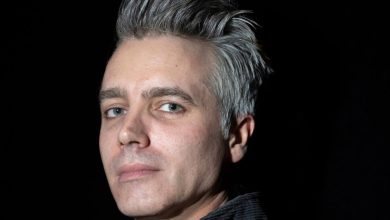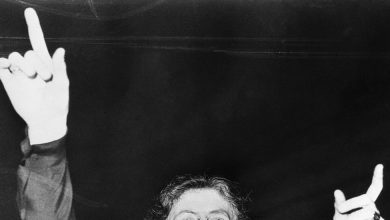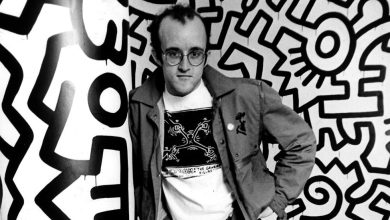A Historical Novel That Is Also a Mash-Up of the Centuries

THE FUTURE FUTURE, by Adam Thirlwell
“It all began with writing,” goes the first line of Adam Thirlwell’s latest novel, in which a young socialite named Celine is slandered in pornographic, anonymously authored pamphlets circulating in prerevolutionary Paris. Four pages later, Thirlwell clears his throat — actually, Celine’s publicity troubles go back to the Big Bang: “The universe disintegrates into a cloud of heat, it falls inevitably into a vortex of entropy, but within this irreversible process there may be areas of order, portions of existence that tend toward a form, in which it might be possible to discern a design — and one of these was this story of Celine and her friends.” This could have gone without saying, but Thirlwell can’t help himself. In “The Future Future,” the English writer compulsively gestures to the biggest picture and decides it’s the gesture that’s profound.
Celine will live for centuries, but we first encounter her at 19, newly married to a “minor but murderous fascist” in Thirlwell’s unmoored version of the ancien régime. Her life consists of sending messages to her two best friends, playing parlor games and ordering takeout from Balthazar, “the restaurant three blocks away that everyone liked for its old-school glamour.” But when the satirical literary pamphlets known as the libelles start to appear in Paris, attacking upper-class women including Marie Antoinette, Celine’s likeness becomes a best seller, and she undergoes a crisis of meaning. The pamphlet readers “believed they knew Celine without knowing her at all.”
Thirlwell overcorrects for the vulgar pamphleteers by asking his readers to get to know Celine more as a discussion question than as a character. How will she take back her own narrative, with what power? What is her place in the world? Thirlwell follows Celine up to and beyond the year 2050, staking temporal signposts in prim updates (“it was the new era of publication”; “it was an era of war and major money”) instead of scenes (the word “meanwhile” is a favorite shortcut), and expounding on the insufficiency of language whenever possible. Sweeping yet tentative sentences are the rule, as in: “Something was coming adrift for Celine, and it was maybe her sense of parts and wholes. It seemed increasingly difficult to relate all parts to a whole, in some problem of topology.”
Setting in this novel is also flamboyantly indistinct. Paris is identifiable by name only, and later the same goes for colonial Boston, Hispaniola, even the moon. “The Future Future”is less a historical novel mired in the transformations of the late 18th century than an anachronistic one that treats all the years since as fair game: There’s Balthazar (a real, currently open restaurant in downtown New York City), the word “fascist,” Napoleon in what looks like an S.U.V. with tinted windows. Characters say things like, “I’m not like trivializing your pain … but no.” With Celine on the ground, Thirlwell maneuvers proximally to touch on colonialism, media frenzies, dictators and censorship, with interludes about figures like Toussaint L’Ouverture and Louis Cook that read like completed to-do lists.
Reflecting after childbirth on her life so far, Celine thinks “of everything that had happened and it seemed that so much had happened that nothing more could happen.” (Things are always “seeming” to Celine, even when they are actually happening.) Were she a more conventional character, we might wonder at this impersonal self-talk. But for Thirlwell, Celine is more like the chair in the corner of a bedroom where, by some quirk of gravity, everything always ends up. Thirlwell puts it differently: “It was as if she had been chosen to understand things before other people understood them, precisely by being transformed into deadbeat pornography.” Why is this all so wooden? Just because Celine mistrusts language, seeking instead “something which language was pointing to but which escaped it forever”?
Thirlwell has a history of cultivating lightly adversarial relationships with his readers. See his 2012 novella “Kapow!,” whose textual layout is designed to manipulate both eyes and hands; and the narrative asides in his debut, “Politics”(“This is another moment in my novel where you must not let your own private theories affect how you read”). To read a Thirlwell novel is to be forced to stroke one’s chin.
Since “The Future Future” has taught me that everything is connected, I must point out its resemblance to Sheila Heti’s latest novel, “Pure Colour,” which also uses floaty characters and plain, preordained-sounding language to freewheel about the cosmos, time, spooky action at a distance and finding the “right size” (Thirlwell’s phrase is “the right proportion”) for people and events. Like Celine, Heti’s protagonist, Mira, communes with what seem to be voices of the universe and falls in love with other women. And Celine’s brief expedition to the moon, where she is told that something can arise from nothing, is all about getting perspective — not unlike Mira’s temporary residence in a leaf.
After having epiphanies that tell them to return down to earth, both women decide they belong with the trees. Heti’s sense of humor about this is perfect — Mira paints herself green and dons a “leaf costume.” Thirlwell writes with a straight face: “The forest around Celine was green. She walked inside it. Then Celine was green too.” Let that sink in.
THE FUTURE FUTURE | By Adam Thirlwell | 333 pp. | Farrar, Straus & Giroux | $28



